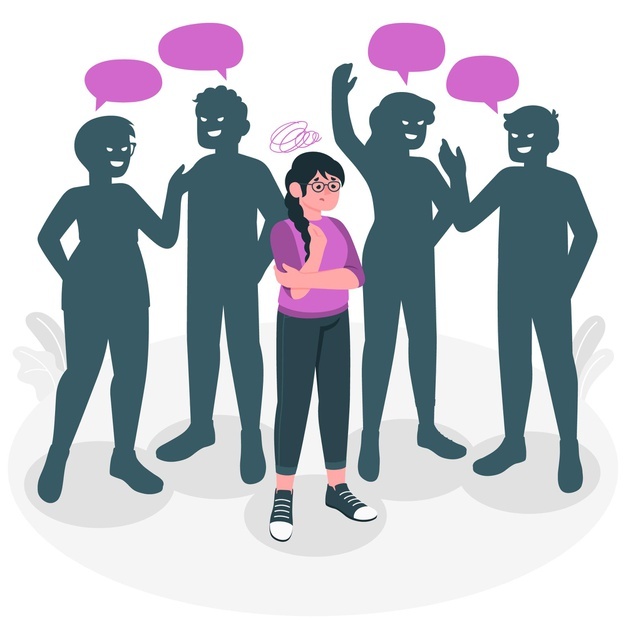
Does Dance Therapy really help others in overcoming their social anxiety?

Psychotherapy has emerging trends and new age therapies keep adding on. Creative arts therapy is one such field that is evidence-based. They primarily focus on emotional expression as an essential component of mental and physical health. These therapies are observed to combine the use of scientific research and methods to improve communication, emotional expression and encourage the integration of physical, cognitive, and social functioning, and promote mental health.
The underlying idea behind creative arts therapies is that communication can be difficult for many individuals with mental health conditions. Hence, it has been suggested that creative arts therapies can compensate for this issue as it offers alternative means of communication and expression. The major crux is emotional expression is essential and is the primary mechanism of these therapies.
What is Dance Movement Therapy?
Dance has been an integral part of our social milieu. Be it a social gathering, night clubs, weddings or some celebration. Dance helps express as well as brings social togetherness.
Dance and Movement therapy is the youngest of the creative art therapies which was established as a distinct profession. As a definition, Dance and Movement therapy is a psychotherapeutic use of movement to further the emotional, cognitive, physical, and social integration of the individual (American Dance Movement Association, 2011).
It is well established that mind and boy are interconnected and the therapists who practice DMT focus on movements as a means to address feelings, cognitions, physiological symptoms, and behaviours associated with mental illness. Certain areas that DMT therapists focus on are mind-body connection, emotional expression, communication, social interaction, creativity, expressive and improvisational movement, dance with or without music, psychological therapeutic techniques, and the therapeutic relationship. It is both an art and a science that is currently driven by empirical research in psychiatry, psychology, medicine, nursing, physiotherapy, and the discipline of dance therapy itself. Dance therapists can provide treatment for people with both physical and psychological problems including somatic disorders, anxiety, depression, heart disease, and cancer, etc.
What exactly is Social Anxiety?
Social anxiety is an excessive fear of social situations. Everyday social interactions cause irrational anxiety, fear, excessive self-consciousness, and embarrassment. The common symptoms we see include excessive situations where one may feel that they are being judged, worry about offending someone, or humiliating oneself. Fear can affect one’s relationships, occupation, and day-to-day activities.
Social anxiety can be present in various social situations such as being at a job interview, responding in a class, meeting new people, dating or sitting in a restaurant with other people. The person with social anxiety experiences a lot of fear that they would be humiliated, judged, or rejected. Mental health clinics in Mumbai often see cases with people having social anxiety. This largely hampers their functioning.
In regular psychotherapy, exercise is an important aspect of general well-being. It helps in reducing anxiety and depressive symptoms. This is seen to regulate serotonin and dopamine levels. This is used in DMT as movement facilitates
Dance Movement Therapy for Social Anxiety
DMT can be a very effective, efficient, and non-threatening treatment approach for people struggling with social anxiety disorder. Since one of the biggest obstacles for someone with a social anxiety disorder is difficulty verbalizing emotions and concerns, DMT is a natural portal of communication when words are not available. This then enables the therapist to identify the problem and direct an effective course of treatment. Moreover, the non-verbal approach is considered to be suitable for patients with high levels of anxiety, since talking about anxiety and traumas can evoke fear and associated physical reactions. The supposed mechanism is that during the process of DMT, one can experience a feeling of being ‘in control,’ which helps to counterbalance the overwhelming experience of anxiety.
Psychologists have an opinion that another curative factor involves the sensory and kinaesthetic aspect of Movement. Anxiety is mediated by the amygdala, which processes emotion and sensory input from our environment. The creative process of DMT can ‘’speak the language” of anxiety at a level of cognitive experience that language at times cannot."
DMT is centered on strengthening one’s ability to remain in the present moment, in the here and now, versus 'flying away' with your worries. This not only draws awareness to the present moment but also opens the door to explore issues of identity and self-acceptance. The ability to engage in this type of self-reflection and mindfulness of the present moment ultimately leads to a significant decrease if not complete elimination of anxiety.
The rationale behind DMT is that excessive talking about the anxiety is avoided, to enable patients to deviate from ‘the thinking-mode’ into a ‘feeling-mode’: the aim is to support the individual to obtain ‘profound connection to embodied experiences’: to become aware of the anxiety feelings and responses in the body and learn to influence (downregulate) these feelings, by practicing and experiencing. These processes are thought to be supported through various artistic exercises.
Below are some of the major benefits of Dance Movement Therapy for Social Anxiety:
- Calms the nervous system.
- Encourages self-expression.
- Increases self-awareness.
DMT when combined with traditional psychotherapy can be very effective for social anxiety.
If you feel you are dealing with social anxiety, immediately seek help or visit the nearest mental health clinic.
Also read-
https://mpowerminds.com/blog/How-effective-is-dance-therapy-with-your-partner-in-strengthening-the-relationship-Is-it-a-part-of-couple-counselling
https://mpowerminds.com/blog/How-effective-is-dance-therapy-with-your-partner-in-strengthening-the-relationship-Is-it-a-part-of-couple-counselling

How Social Isolation Impacts Geriatric Mental Health? How to Reverse It?
Depression vs Dementia: How to Tell the Difference in Older Adults

